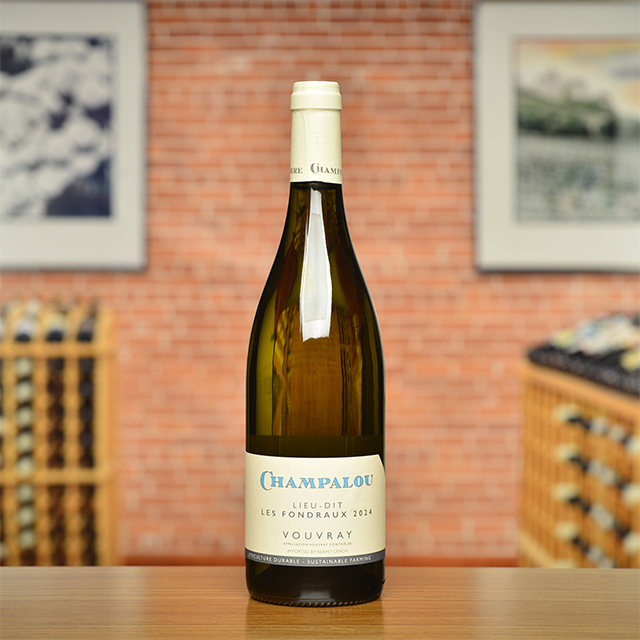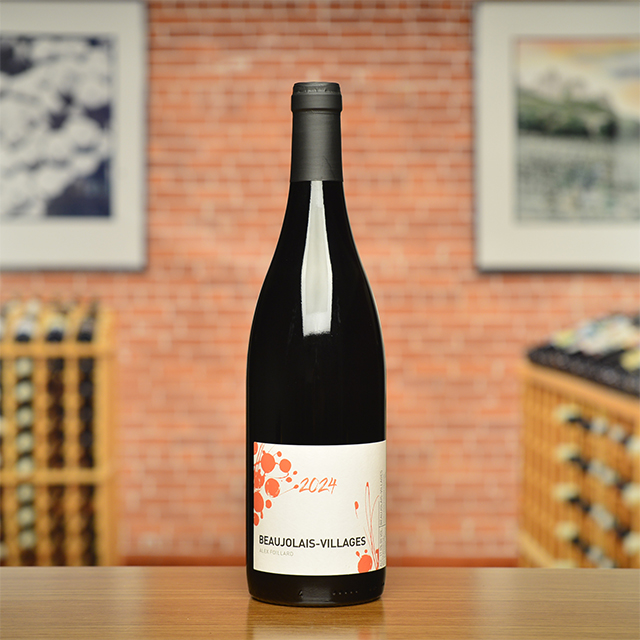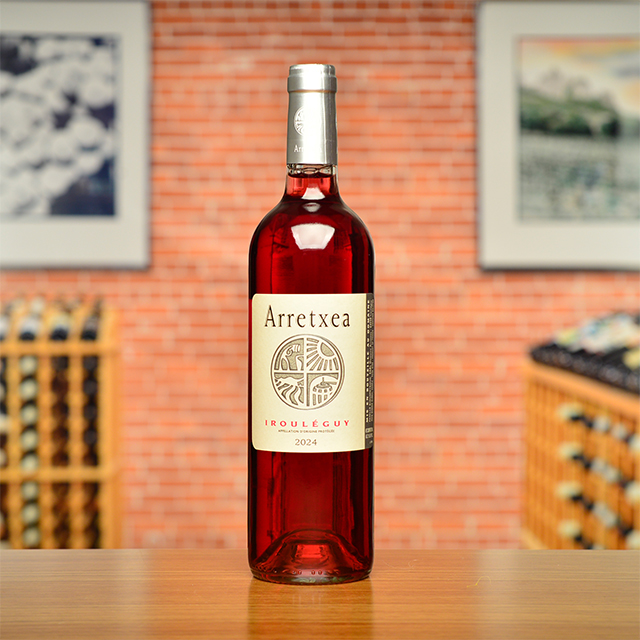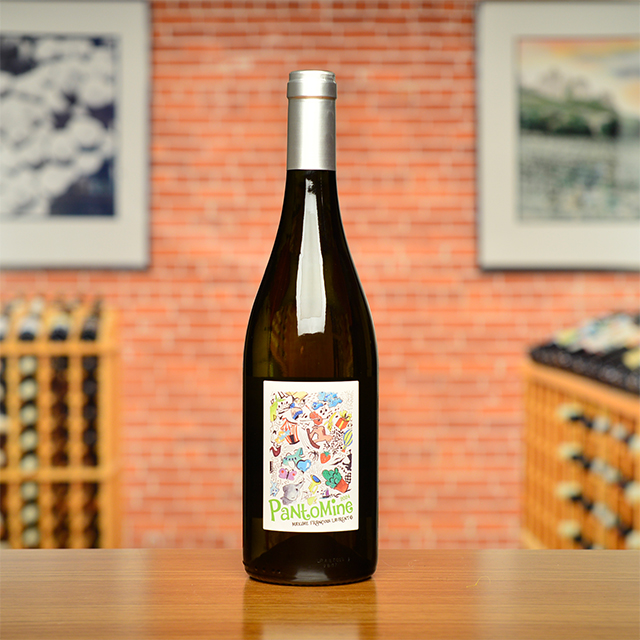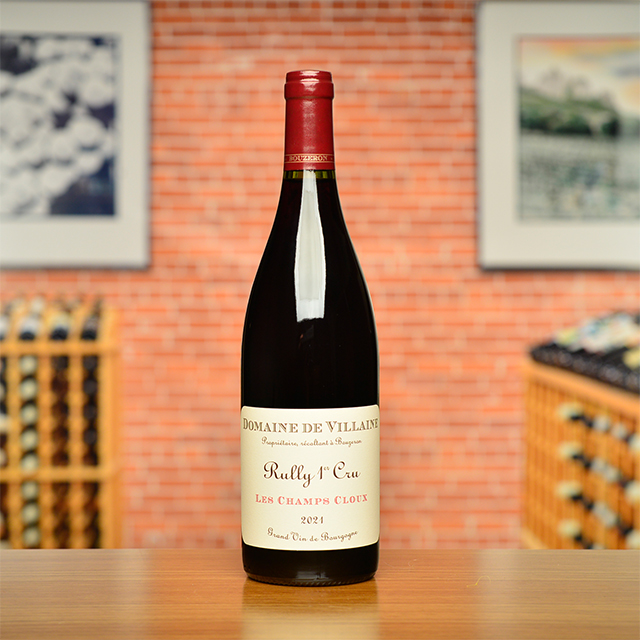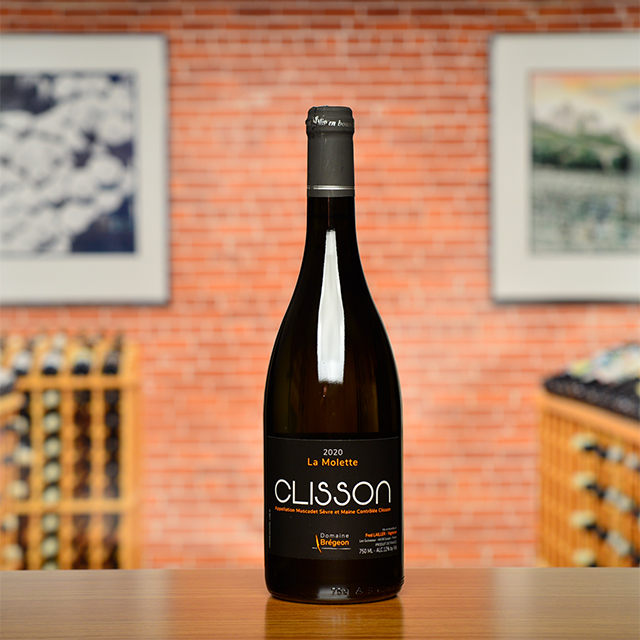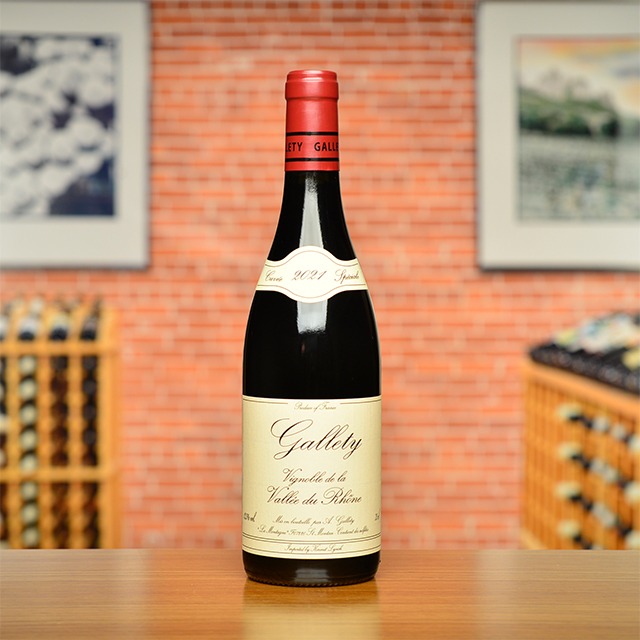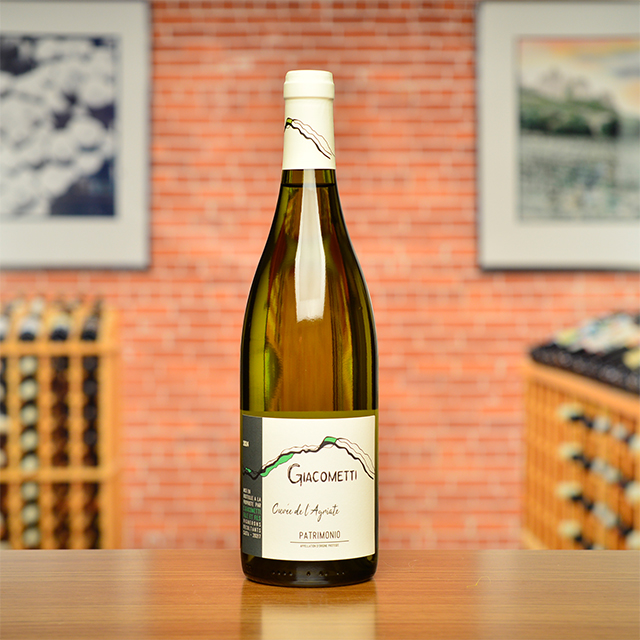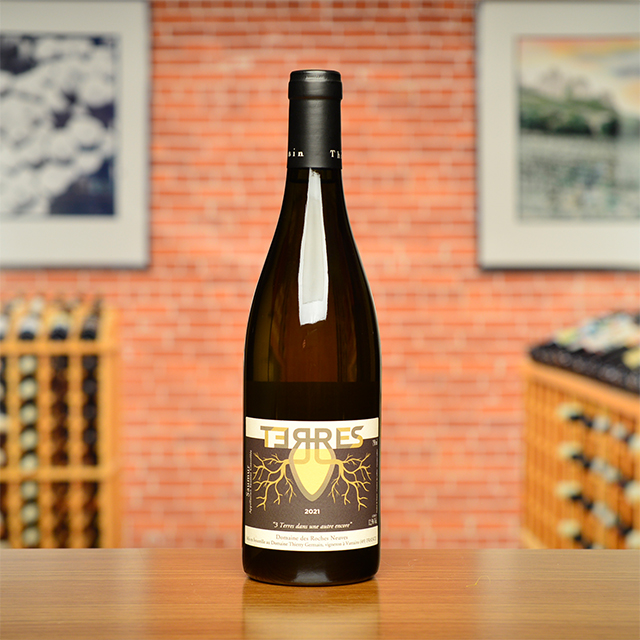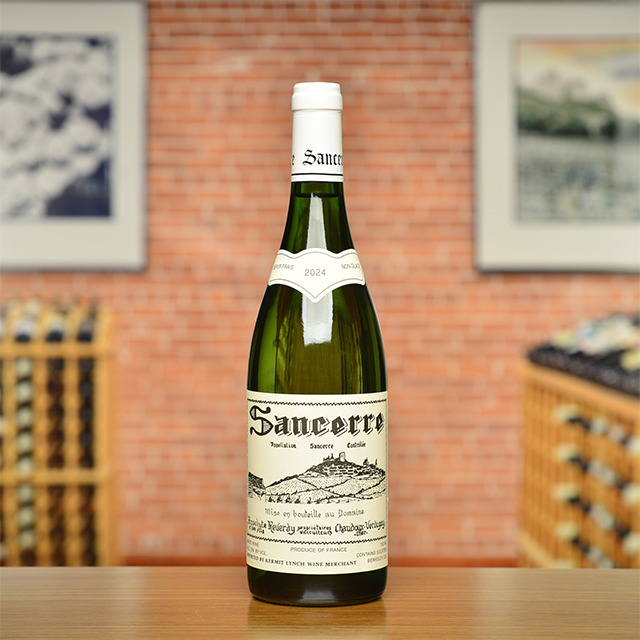Notify me
2017 Chinon “Le Clos Guillot”
Bernard Baudry
If you ever visit Bernard Baudry and his son Matthieu in Chinon, you will notice some very useful tools around their cellar and winery that help you to better understand their six or so distinct terroirs. One is a cross-section map of the landscape that shows the elevation and soil changes of their plots as you move away from the Vienne river. Another is a series of terrariums, side by side, that contain soil samples from each of these terroirs. Looking at the map first, you will notice that Le Clos Guillot is their highest plot, located right outside the town of Chinon. Turning to the glass containers, you’ll see the striking color of the yellow limestone in Le Clos Guillot. It begins to make sense why this cuvée is markedly distinct from the others. Even though all of the wines hail from Chinon, the soil, elevation, and exposition all combine to make Le Clos Guillot their cuvée with the most finesse. Enjoy this bottle over a few nights if you can and follow how the complex flavors of dark berries and graphite open up and become more delicate. This will be a study, in miniature, in how well this wine will evolve over the next five to fifteen years.
—Tom Wolf
| Wine Type: | red |
| Vintage: | 2017 |
| Bottle Size: | 750mL |
| Blend: | Cabernet Franc |
| Appellation: | Chinon |
| Country: | France |
| Region: | Loire |
| Producer: | Bernard Baudry |
| Winemaker: | Matthieu & Bernard Baudry |
| Vineyard: | 15 years, 4 ha |
| Soil: | Sand, Limestone |
| Aging: | Aged for twelve months in barrel; not fined or filtered |
| Farming: | Organic (practicing) |
| Alcohol: | 13% |
More from this Producer or Region

2020 Sancerre Rouge "Champs d’Alligny"
France | Loire
Previously blended into the domaine’s Sancerre rouge, the Champs d’Alligny is now its own bottling, a successful experiment if there ever was one.

2023 Chinon Rosé
France | Loire
Matthieu Baudry captures both youthful fruit and energizing mineral textures with this rosé.

2021 Saumur-Champigny “Les Mémoires”
France | Loire
Sourced from 110+ year-old vines, this is hands-down one of the best Cab Francs being made in the Loire Valley today.

2021 Chinon “La Croix Boissée”
France | Loire
This is the grandest bottling of Cabernet Franc from one of Chinon’s most outstanding producers.

2022 Chinon Blanc
France | Loire
Ultra fresh and brimming with citrus blossom and orchard fruit notes, it has a saline, mineral finish that leaves my palate begging for more.

2021 Chinon “Le Clos Guillot”
France | Loire
Even though all of the wines hail from Chinon, the soil, elevation, and exposition all combine to make Le Clos Guillot their cuvée with the most finesse.

2024 Bourgueil Rosé “La Ritournelle”
France | Loire
Brisk red-fruited twang, some herbaceous zest, and an absolutely mouthwatering zingy finish.

2022 Chinon “Le Domaine”
France | Loire
It is fresh and buoyant enough for casual fare yet has the stuffing to accompany heartier dishes, while its vivid raspberry fruit makes it extremely approachable today, notwithstanding its medium-term aging potential.

2024 Sancerre Rosé
France | Loire
Sancerre Rosé is made from Pinot Noir grown in Kimmeridgian limestone soil, and the Neveu family’s interpretation is fine, floral, crisp, and bone-dry.

2023 Reuilly Pinot Noir
France | Loire
Gently perfumed and full of fresh berries with the bright, stony finish typical of wines from Reuilly
About The Producer
Bernard Baudry
About The Region
Loire

The defining feature of the Loire Valley, not surprisingly, is the Loire River. As the longest river in France, spanning more than 600 miles, this river connects seemingly disparate wine regions. Why else would Sancerre, with its Kimmeridgian limestone terroir be connected to Muscadet, an appellation that is 250 miles away?
Secondary in relevance to the historical, climatic, environmental, and cultural importance of the river are the wines and châteaux of the Jardin de la France. The kings and nobility of France built many hundreds of châteaux in the Loire but wine preceded the arrival of the noblesse and has since out-lived them as well.
Diversity abounds in the Loire. The aforementioned Kimmeridgian limestone of Sancerre is also found in Chablis. Chinon, Bourgueil, and Saumur boast the presence of tuffeau, a type of limestone unique to the Loire that has a yellowish tinge and a chalky texture. Savennières has schist, while Muscadet has volcanic, granite, and serpentinite based soils. In addition to geologic diversity, many, grape varieties are grown there too: Cabernet Franc, Chenin Blanc, Sauvignon Blanc, and Melon de Bourgogne are most prevalent, but (to name a few) Pinot Gris, Grolleau, Pinot Noir, Pineau d’Aunis, and Folle Blanche are also planted. These myriad of viticultural influences leads to the high quality production of every type of wine: red, white, rosé, sparkling, and dessert.
Like the Rhône and Provence, some of Kermit’s first imports came from the Loire, most notably the wines of Charles Joguet and Château d’Epiré—two producers who are featured in Kermit’s book Adventures on the Wine Route and with whom we still work today.
More from Loire or France
2020 Saumur Blanc “Clos Romans”
Thierry Germain France | Loire
2023 Val de Loire Rouge Grolleau
Catherine & Pierre Breton France | Loire
2024 Bourgueil Rosé
Domaine de la Chanteleuserie France | Loire
2024 Menetou-Salon Blanc “Le Prieuré”
Prieuré de Saint Céols France | Loire
2023 Saumur Mousseux “Bulles de Roche”
Thierry Germain France | Loire
Touraine “Fines Bulles”
Domaine de la Chanteleuserie France | Loire
2019 Chinon “Clos du Chêne Vert”
Charles Joguet France | Loire
2023 Muscadet Côtes de Grand Lieu sur lie “La Nöe”
Eric Chevalier France | Loire
2017 Jasnières “Chant de Vigne”
Christine de Mianville France | Loire
2022 Chinon “Cuvée Terroir”
Charles Joguet France | Loire
2018 Muscadet Sèvre et Maine “Gorges”
Domaine Michel Brégeon France | Loire
2021 Saumur Champigny “La Marginale”
Thierry Germain France | Loire
2020 Saumur Blanc “Clos Romans”
Thierry Germain France | Loire
2023 Val de Loire Rouge Grolleau
Catherine & Pierre Breton France | Loire
2024 Bourgueil Rosé
Domaine de la Chanteleuserie France | Loire
2024 Menetou-Salon Blanc “Le Prieuré”
Prieuré de Saint Céols France | Loire
2023 Saumur Mousseux “Bulles de Roche”
Thierry Germain France | Loire
Touraine “Fines Bulles”
Domaine de la Chanteleuserie France | Loire
2019 Chinon “Clos du Chêne Vert”
Charles Joguet France | Loire
2023 Muscadet Côtes de Grand Lieu sur lie “La Nöe”
Eric Chevalier France | Loire
2017 Jasnières “Chant de Vigne”
Christine de Mianville France | Loire
2022 Chinon “Cuvée Terroir”
Charles Joguet France | Loire
2018 Muscadet Sèvre et Maine “Gorges”
Domaine Michel Brégeon France | Loire
2021 Saumur Champigny “La Marginale”
Thierry Germain France | Loire
Our Guarantee

Our Guarantee
We only import wine we drink and enjoy ourselves, directly from the source.
Our wine tastes the same in your home as it did where it was bottled in Europe.
Like the long-term relationships we build with growers, we build long-term relationships with our clients. Have a question? Need wine advice? Just give us a call—510-524-1524.
